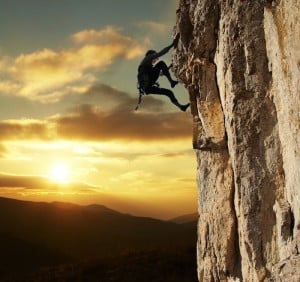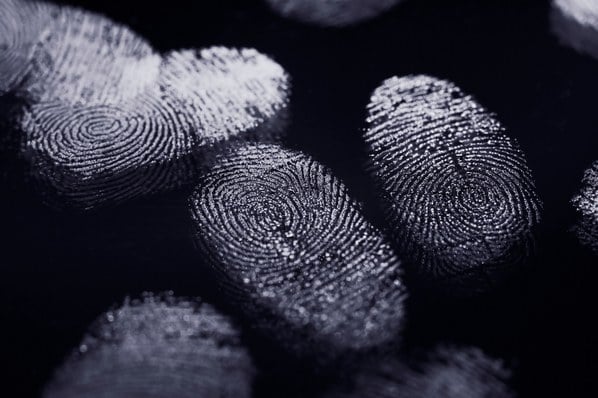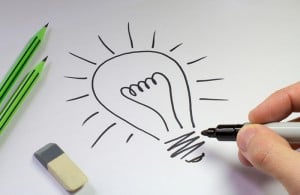 I would never consider myself to be a mountain climber (nor do I play one on TV), but here in the Pacific Northwest, a lot people regularly climb the many nearby peaks.
I would never consider myself to be a mountain climber (nor do I play one on TV), but here in the Pacific Northwest, a lot people regularly climb the many nearby peaks.

Of course, mountain climbing is a difficult and painstaking process. You have to carefully define your destination and plan for your journey. Then once you’re on the mountain, you have to executive flawless technique as you move closer and closer toward your goal. Yet when you finally reach the summit, the hard work pays off with an unparalleled view of the world around you.
When you think about it, mountain climbing is a lot like building a brand. There are stages that your brand must go through in order to be successful. And when it is, the reward is unmatched by anything else in life.
So let’s take a look at the brand development process.
Define
If you’re going to climb a mountain, the first thing you have to do is decide where you’re going to go. In the same way, the brand development process begins with defining your brand’s destination.
For Disneyland, its brand’s destination is to be “the happiest place on earth.” For Porsche, it’s “there is no substitute.” For Subway, it’s “eat fresh.”
Of course, a brand’s destination is more than a pithy statement. It’s essentially a promise to your customers of what your brand will deliver and what experience your customers will have with your brand.
As you define your brand’s destination, keep these key elements in mind:
- Be honest. Don’t make promises that your brand can’t keep.
- Be inspiring. Use your brand to move your customers. Challenge their thinking and help them make their lives and their world better.
- Be concise. If a multi-billion dollar company like Disneyland can tell you their destination (or goal) in 5 words, so can you. And if you can’t, keep working on it until you can.
Develop
Once you know your destination, you’ll need to develop a map to the summit. And whether you’re climbing a mountain or building a brand, there are key qualities that will tell you whether or not you’re still on course.
Your brand should be:
- Trustworthy. It’s not enough to simply craft a brand message. You must also make sure that your customers’ experience is consistent with that promise. If your brand promise is to provide superior customer service, then develop a plan to deliver on that promise.
- Remarkable. If you want your brand to be remarkable, you’ll need to delight and inspire your client's customers. You’ll need to develop ways to do things better than everyone else. This might mean an easier return policy or a faster response time to customer complaints.
- Unmistakable. To build an unmistakable brand, you must be the one and only at what you do. This doesn’t mean that your product or service has to be entirely unique (though it’s great if it is). But it does mean that you’ll need to develop ways to differentiate your brand from the competition.
- Essential. Your brand must become irreplaceable to your customers. To do this, your brand must resonate with your customers on an emotional level. It must connect with the way they feel, not just the way they think.
Deliver
Once you’ve defined your destination and developed your map to the summit, it’s time to start climbing the mountain. For your brand, this means consistently delivering on what you promised your customers.
Your brand isn’t built in the marketing department or in the board room. It’s built in every interaction between your brand and your customer. For every positive interaction, your brand takes a small step forward. But for every negative interaction, your brand takes a huge step backwards.
So what are the keys to delivering a consistent brand experience?
- Employees. Your employees represent your brand every day. They should know where your brand comes from, what it stands for, and why customers love it.
- Messaging. Your brand’s message should be consistent through all the stages of the buyer’s journey.
- Technology. Your software should enable you to deliver consistent content, offers, products, and interactions to your customers.
Diagnose
Any experienced mountain climber will tell you that it’s crucial to always diagnose the situation as you’re climbing. The same is true for brand development as well. You should continually diagnose your brand’s health.
As you monitor your brand, here are a few things to look at:
- Customers. What are your customers saying about your brand? Social media is an effective way to monitor your brand’s performance with customers.
- Stakeholders. What are your employees, vendors, and partners saying about your brand?
- Competition. How is your brand different from the competition?
- Website. Does your website accurately portray your brand? Does it effectively turn visitors into leads?
- Messaging. Is your messaging consistent across multiple channels, such as website, email, and social media?
Building a brand, like climbing a mountain, is a difficult task with unparalleled rewards. To build a successful brand, you need to define your destination, develop a plan to get there, deliver on what you promised, and diagnose along the way.
Branding

![30 Famous Brand Names You're Probably Pronouncing Wrong [Infographic]](https://53.fs1.hubspotusercontent-na1.net/hubfs/53/pronounce-brand-name-wrong-infographic_2.webp)


![The 5 P's for Building a Powerful Brand [SlideShare]](https://53.fs1.hubspotusercontent-na1.net/hubfs/53/00-Blog_Thinkstock_Images/powerful-brand.png)

